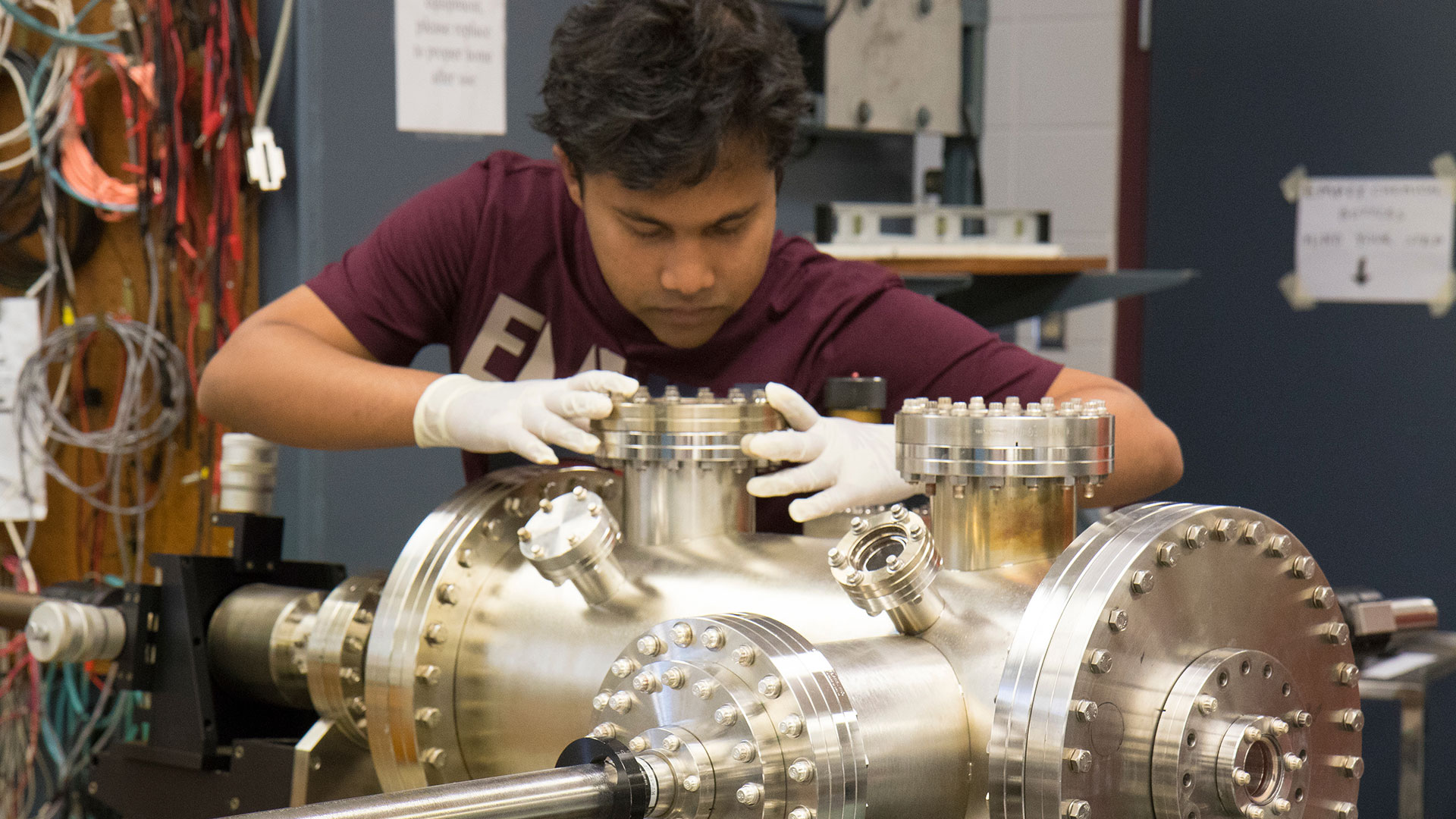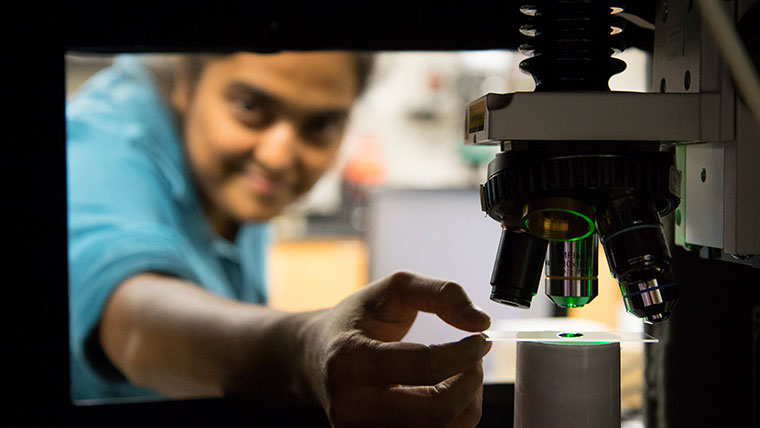Materials Physics Track

Revolutionize energy and structures
Make real-world impacts in physics and materials science on a nano and macro scale.
Use new technologies to conduct research in quantum mechanics (small particles), thermodynamics (energy interactions) and solid-form properties.
Use new technologies to conduct research in quantum mechanics (small particles), thermodynamics (energy interactions) and solid-form properties.
Why take the materials physics track?
- Be at the forefront of innovation – Prepare to make breakthroughs in nanotechnology, electronics, and more. You'll work with state-of-the-art lab equipment to explore the latest technologies.
- Surge forward in your academics – Start earning credits toward an accelerated master's degree in materials science. Widen your net of career opportunities and get a boost in pay.
- Contribute to emerging industries – Dive into diverse topics in atomic structure and bonding, thermodynamics of materials, quantum mechanics and more. Your classes and research will prepare you for high-paying careers.
- Fuse together two sciences – Physics and materials science examine the scientific principles of materials. Apply both of your interests to develop real-world solutions in modern technology.
Student spotlight
Accelerate your research
How does creating GIFs help us better understand particle acceleration? Emily Rapp's
research helps answer that question.

Degree options
Want to take the materials physics track? Review the program requirements for the exact courses you need to take.
Use the four-year plan below as a guide for your overall schedule.
Complement your degree
Add onto your credentials and gain expertise in related areas.

Careers and outcomes
Make technological impacts in fields from sustainability and health care to aerospace
and construction.



